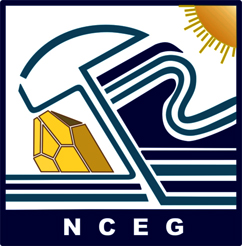Envg.807 Hazardous Minerals Impact Assessment (3 C.H)
Course objectives
This course main objective will be to give students a deep understanding about the theoretical, practical and numerical methods adopted to evaluate the hazardous minerals impact on ecosystem and human health. This course aims to provide a background on the pathways followed by diverse minerals or their residue to travel in the hydrosphere, terrestrial sphere, biosphere, and to the food chain of human being. Students will be trained in using statistical packages such as R-studio and Weka software for qualitative and quantitative analysis of the data, to predict best fit model of the data, and made a decision using prediction model to mitigate the impact of hazardous minerals on soil/water and plants and human health depending on the aim of their research study. Students will visit the mineral mining sites locally. Finally, students will learn numbers of case studies and will write a research paper, a technical report to evaluate the ecological risk and hazardous health effect of minerals using numerical modelling and prediction models.
Practical: Assignments, case studies, practical exercise, field visit, laboratory equipment’s use such as FTIR, UV-VIS Spectrophotometer/AAS/TOC.
Course content:
Minerals classification: type, subtype and classes. Minerals nature, carcinogenic, mutagenic and hazardous: Half-lives, persistence, adsorption, desorption properties, degradation potential; Pathways to the atmosphere, lithosphere, hydrosphere, and biosphere. Impact of hazardous minerals to ecosystems, crops, livestock and human health. Principles of impact assessment analysis and techniques and ecosystem restoration using integrated sustainable approach; data preparation, feature selections, and data mining algorithms are integrated using WEKA software identify cluster and, regression analysis using R-programming. Risk identification and evaluation from the data, data analysis using risk assessment matrices, Ecological risk assessment was evaluated via contamination factor (CF), pollution load index (PLI), Nemerov integrated pollution index (NIPI), and ecological risk indexes (ERI). Enrichment factor (EF) in soil, Human health risk assessment (carcinogenic or non-carcinogenic risk) in term of chronic daily intake (CDI ingestion, CDI dermal, CDI inhalation), hazard quotient (HQ ingestion, HQ dermal, HQ inhalation), hazard index (HI) and total hazard risk index (THRI), risk assessment model; regression model using R-studio software, coherent model, case studies, data analysis. spectroscopy methods with physical/chemical techniques to identify the minerals and then to differentiate various types of minerals from their functional groups using FTIR, UV-VIS Spectrophotometer/AAS/TOC. The data will be generated from the peaks as appeared on spectroscopy spectrum. Furthermore, using statistical packages students will draw conclusion about the hazardous nature of the minerals and their impact on human health
Course outcome:
Students will have a complete understanding about the fate and effect of hazardous minerals impact on human health and soil physicochemical characteristics. Students research and technical writing skills will be improved. Students will be trained in the use of spectrometer equipment’s, FTIR, AAS and draw the results from the peaks as appeared on the spectrum. Students will have a command on use of statistical packages and software for qualitative and quantitative analysis of the data, to predict best fit model of the data, and made a decision using prediction model to mitigate the impact of hazardous minerals on soil/water and plants and human health depending on the aim of their research study.
Recommended Books:
- Medical Geology in Mining: Health Hazards Due to Metal Toxicity by Kirtikumar, R., Shubhangi, P., and Anupam, A., Springer,Cham, Germany, 2022.
- Minerals latu sensu and Human Health by Gomes, C., Michel, R., Springer, Cham, Germany, 2021.
- Environmental Risk Assessment: A toxicological Approach, by Simon, T., 2nd ed., CRC Press, Boca Raton, USA, 2020.
- Minerals, Metals and Sustainability by Minh, C. N., Scitus Academic, LLC, Wilmington, USA, 2017.
- Minerals and Human Health by Larissa, D., Congnella Academic Publishing, San Diego, USA, 2015.
- Environmental Impact of Mining and Mineral Processing: Management, Monitoring, and Auditing Strategies by Ravi, J., Butterworth-Heinemann, Oxford, UK, 2016.

